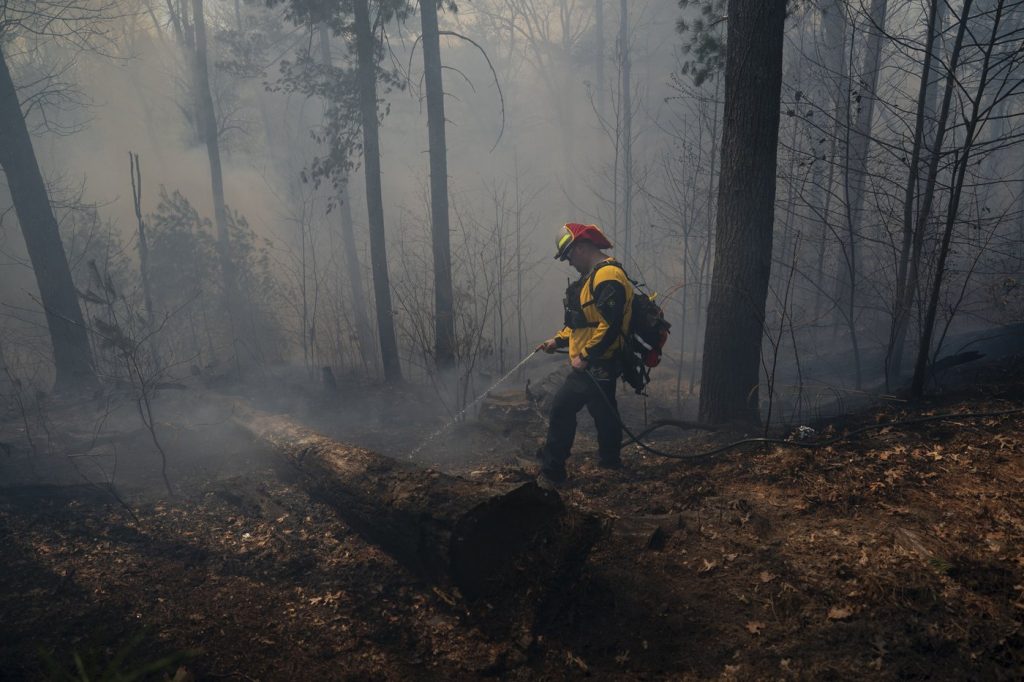PRESCOTT, Ariz. (AP) – Throughout the southwestern U.S. up towards Minnesota, Iowa, and even parts of New Jersey, communities have been grappling with an unusual absence of winter this year. Many areas recorded their driest winters on record, with snowpack levels being critically low, resulting in an environment that poses elevated wildfire risks. The conditions have motivated over 1,000 firefighters and fire managers to gather at an annual wildfire academy in Arizona, where they received extensive training in various aspects, including air operations, brush cutting with chainsaws, and fire line construction.
Roy Hall, the prescribed fire officer for the Arizona Department of Forestry and Fire Management, highlighted how the combination of low moisture levels and warm weather can accelerate fire spread and intensity. Commenting on the dry conditions that have prevailed for several months, Hall emphasized the need for preparedness as the fire season approaches.
According to experts from NOAA’s National Centers for Environmental Information, as of early March, total winter precipitation in the U.S. was just below 6 inches (15.24 cm) – nearly an inch (2.54 cm) short of the average. The winter months from December to February ranked as the third driest on record. In northern Arizona, especially in Flagstaff, there was a staggering deficit of 50 inches (1.27 meters) of snowfall this winter. Although a significant storm in mid-March temporarily disrupted travel by closing Interstate 40, it was insufficient to remedy the overall precipitation deficit.
New Mexico has faced similar challenges, with at least 17 locations reporting their driest winters ever or tying previous records. Albuquerque notably recorded a mere 0.12 inches (0.30 cm) of precipitation over a three-month period. Senior hydrologist Andrew Mangham from the National Weather Service pointed out that a significant reduction in moisture availability has led to ongoing drought conditions in the state.
The dry spells across Arizona, New Mexico, and parts of the Midwest have led to the issuance of numerous red flag warnings, signifying heightened wildfire risks due to low humidity and unfavorable weather conditions. In mid-March, Oklahoma suffered devastating wildfires that destroyed hundreds of homes. Additionally, crews in New Jersey and the Carolinas had to respond to similar wildfire threats.
Land managers and firefighting officials are particularly concerned about the nearly nonexistent snowpack in mountainous regions, as it typically provides necessary moisture to control fire behavior. With the snowpack peaking around April 1, forecasters indicate that many areas are already experiencing melting, which can be exacerbated by strong spring winds carrying dust that accelerates the melting process. Even parts of southern Alaska are reporting snow drought conditions, with the Anchorage airport marking its driest February and large swathes of low-elevation areas remaining nearly snow-free as of March 1.
Recent storms brought some much-needed moisture to California, barely elevating its snowpack levels to average. However, much of the southern region is still grappling with moderate to extreme drought. The impending release of a new wildfire outlook is anticipated, although California is not currently identified as facing significant wildfire potential. The devastating fires in January that engulfed urban areas serve as a precedent of the dangers posed by wildfires.
Communities across the West are proactively addressing these wildfire threats. The destructive fires witnessed in Los Angeles prompted various municipal leaders to host community meetings to raise awareness of wildfire hazards, especially in San Juan County, New Mexico. The Four Corners area, where Arizona, New Mexico, Colorado, and Utah converge, is particularly targeted for high fire potential owing to the adverse conditions. In March alone, firefighters in San Juan County responded to 25 bushfires within the first 27 days, indicative of the elevated risks.
In Arizona, the Phoenix Fire Department has alerted municipal leaders about the increasing fire risks. They are implementing strategies to mobilize resources swiftly to curtail fires before they escalate, particularly in regions where urban development meets wilderness. In Scottsdale, Mayor Lisa Borowsky suggested forming a volunteer brigade to enhance wildfire prevention efforts, focusing on the risks posed by invasive species and overgrown vegetation within the McDowell Sonoran Preserve.
Christopher Reed, a fire prevention captain with Arizona’s forestry department, stresses the importance of individual preparedness. He encourages residents to fortify their homes and prepare defensively rather than viewing wildfire as a distant, large-scale issue. Reed aptly notes, “Day 1 of firefighting is now.”










